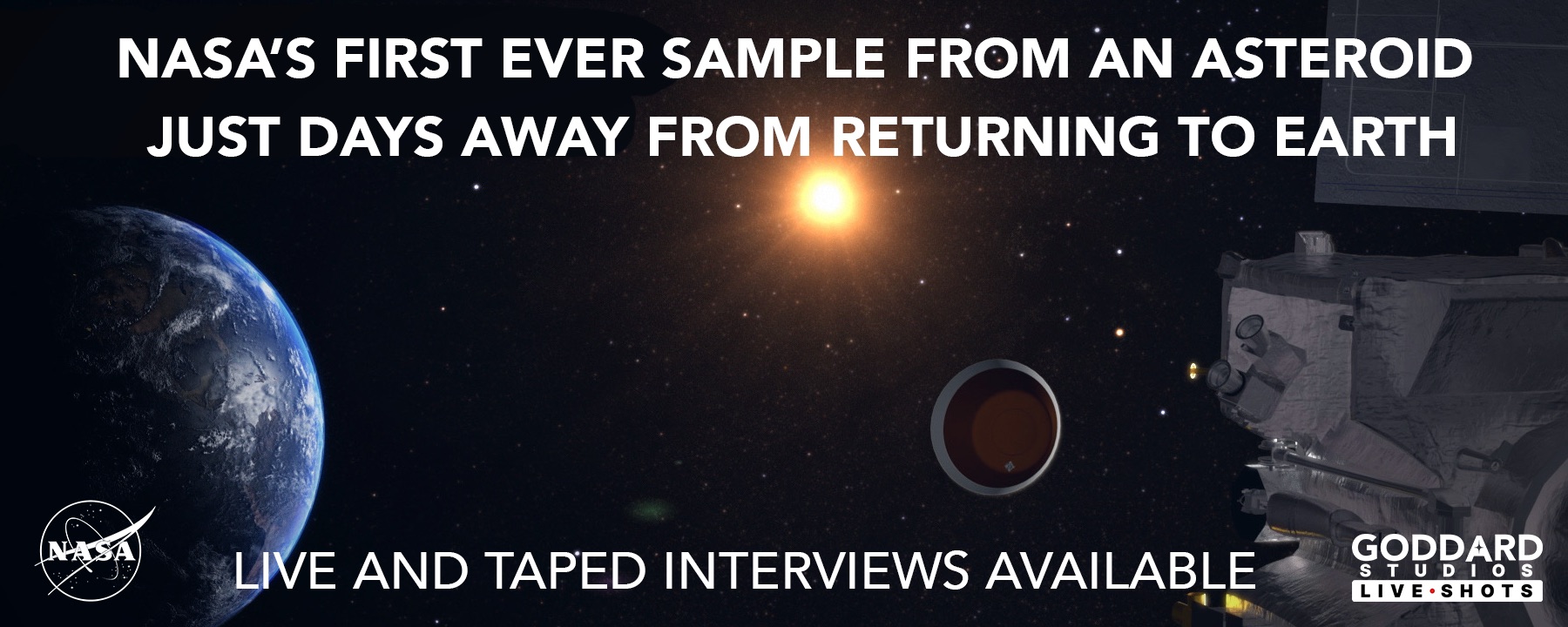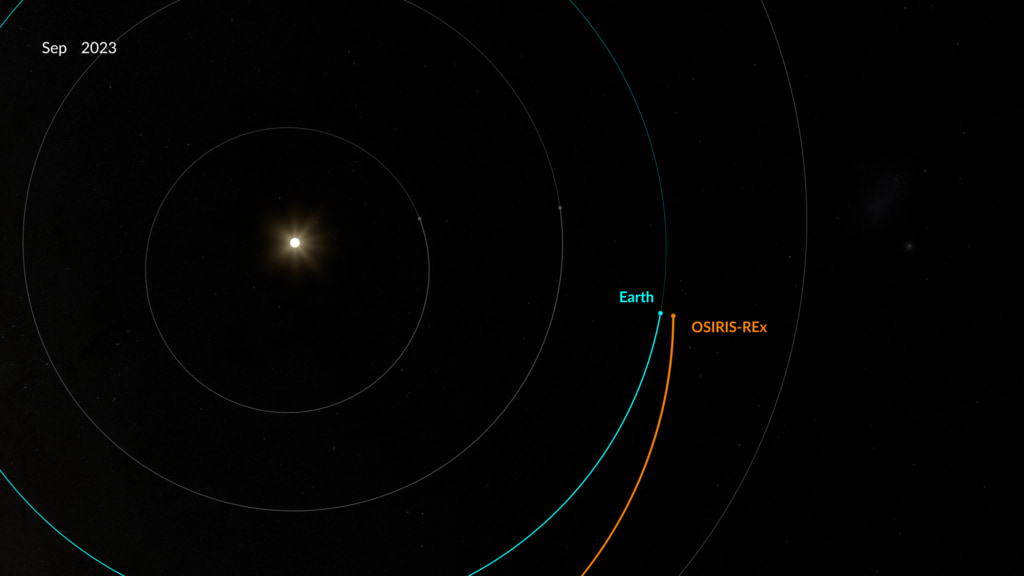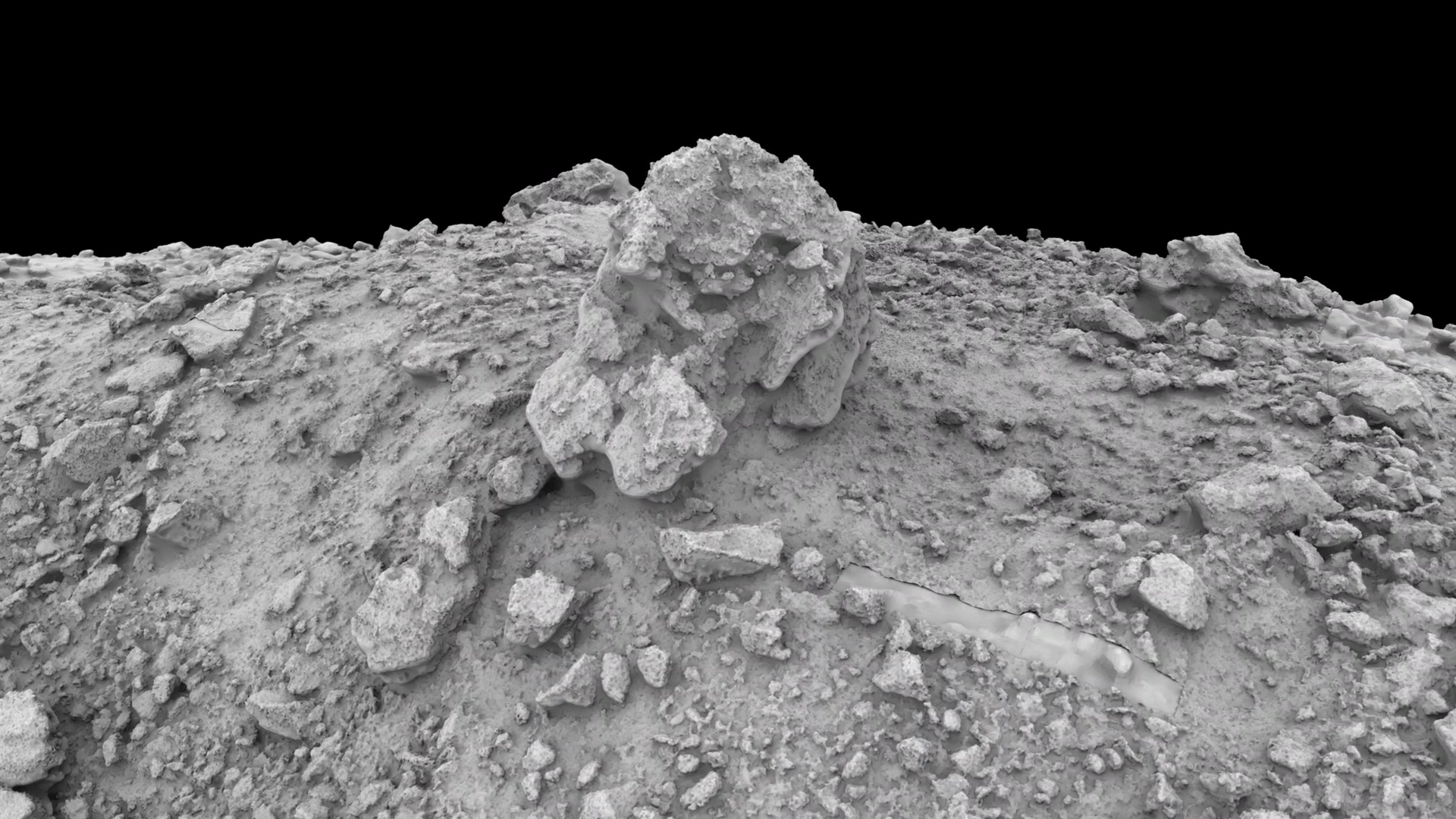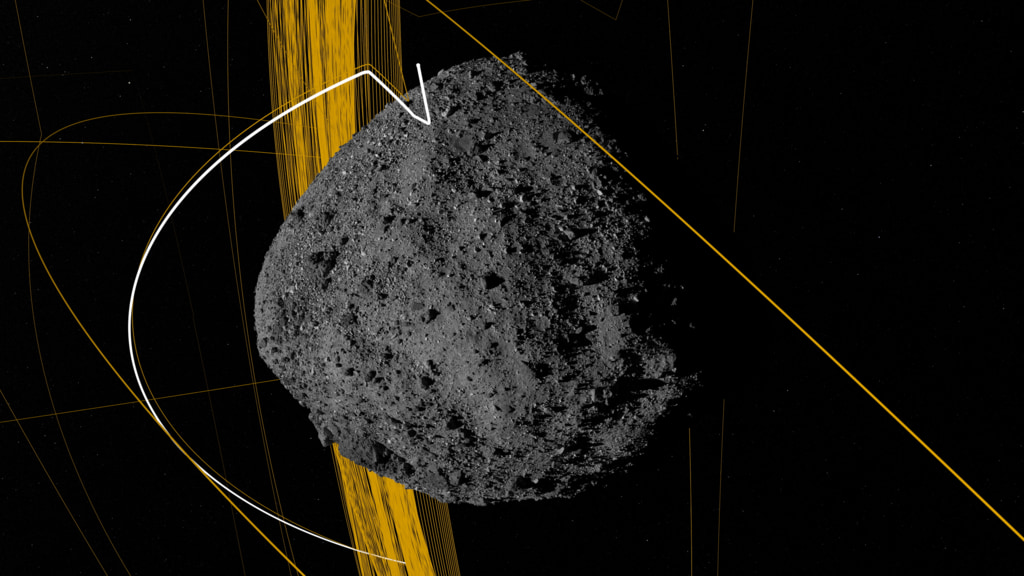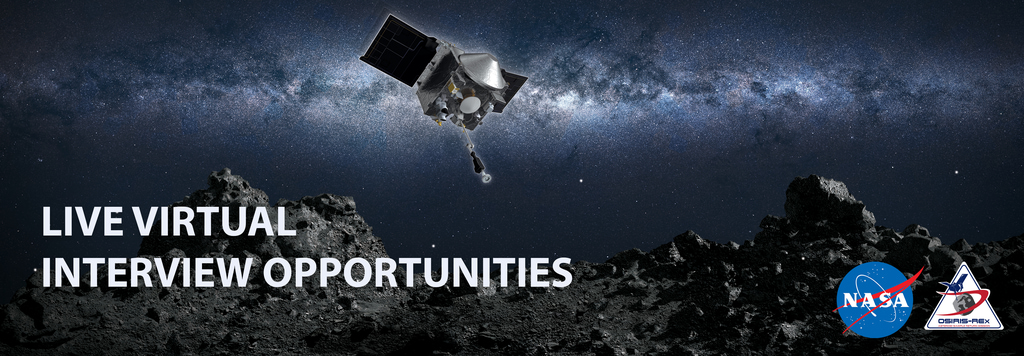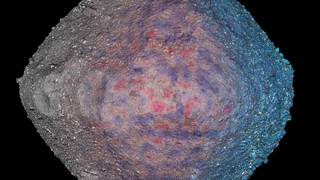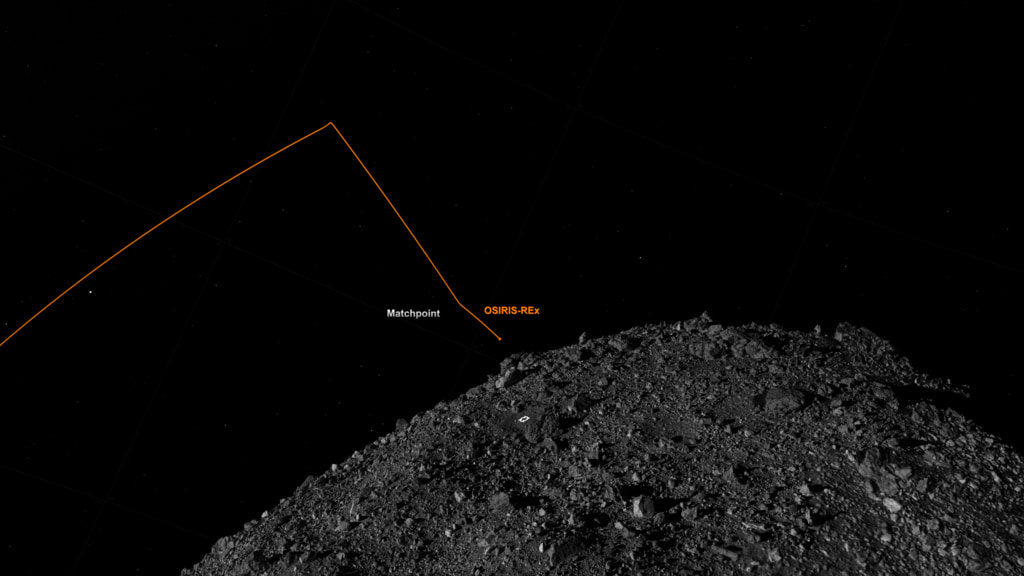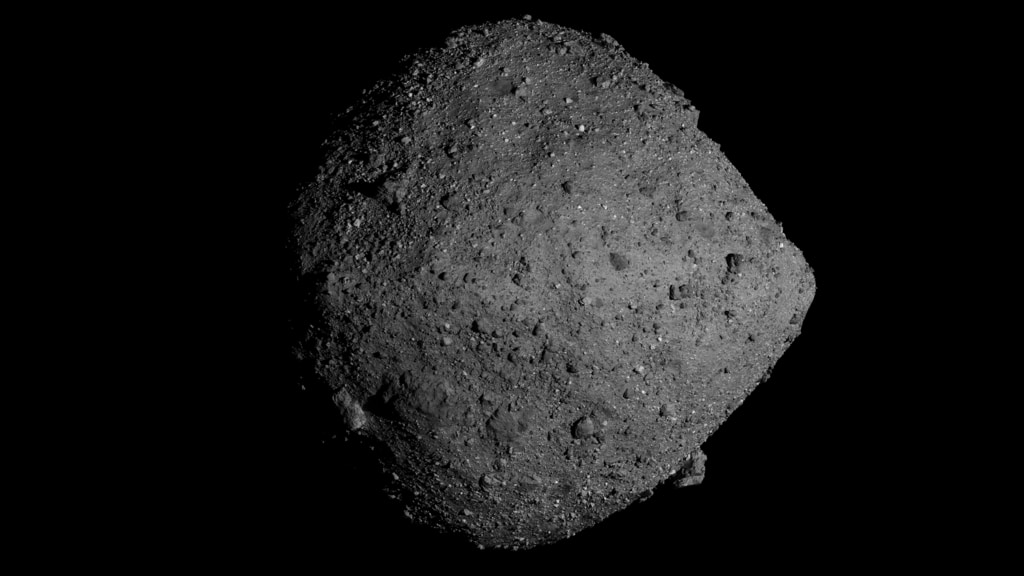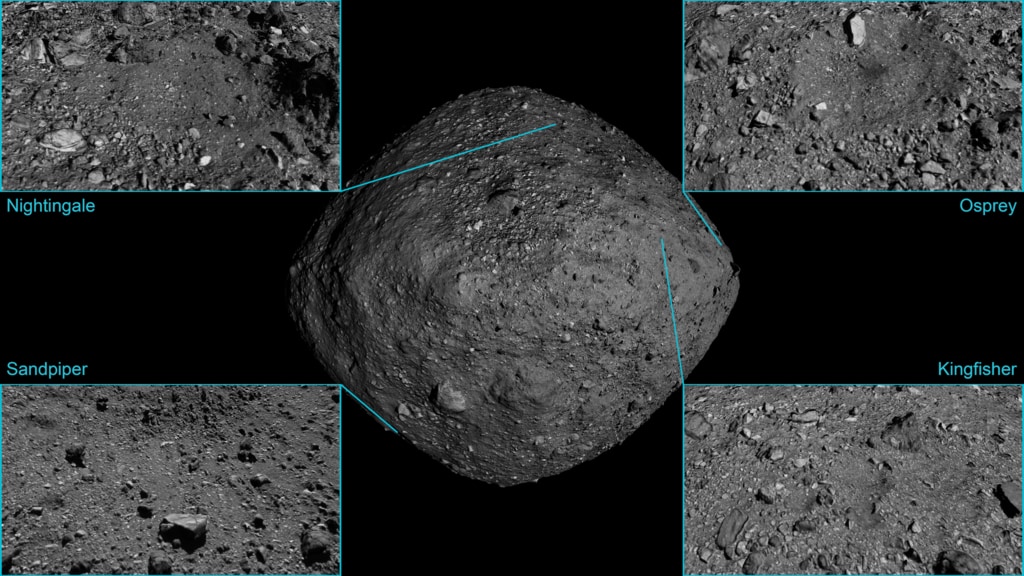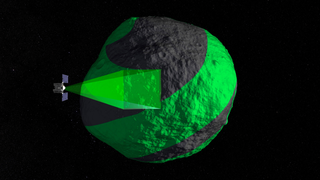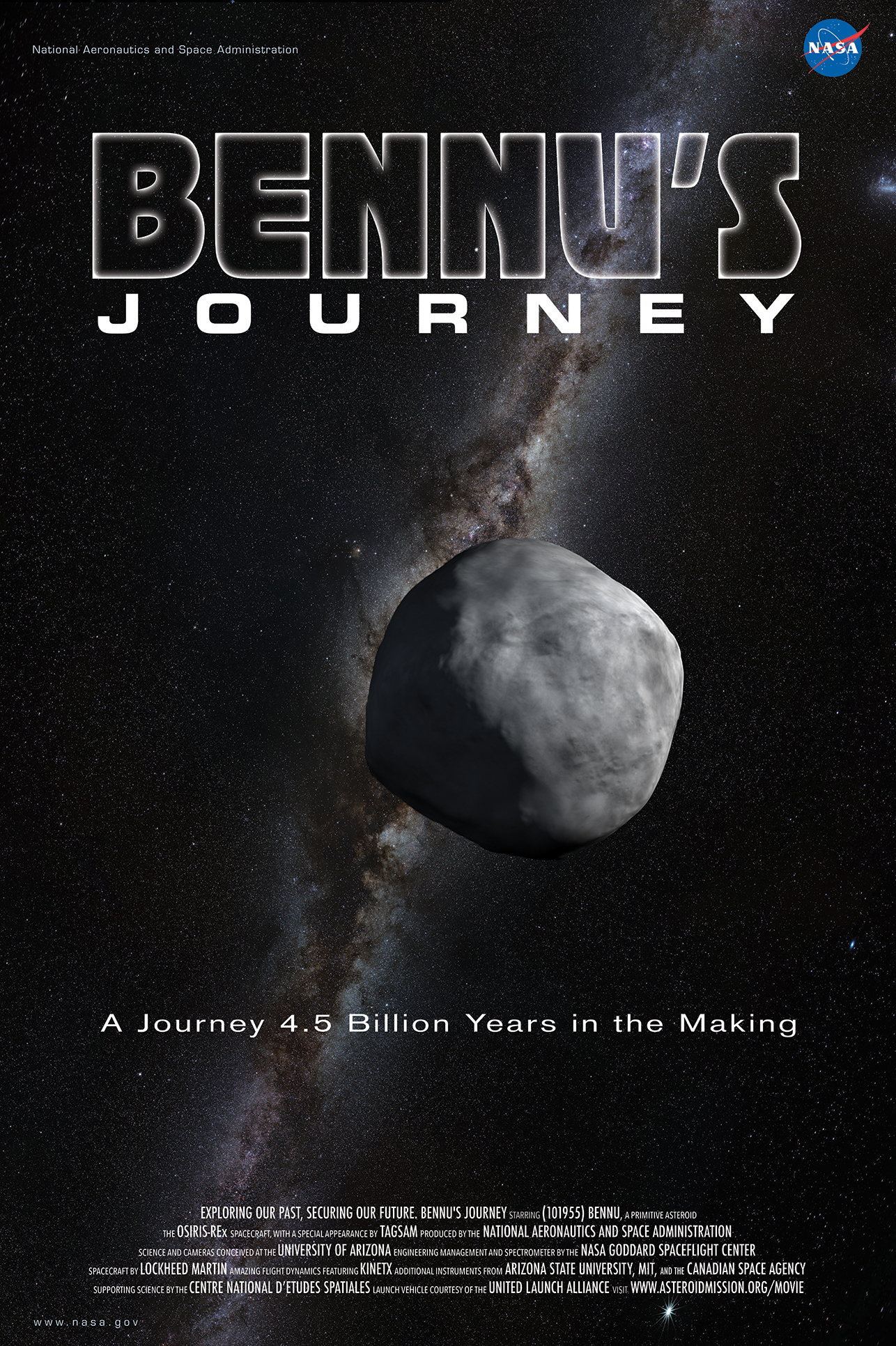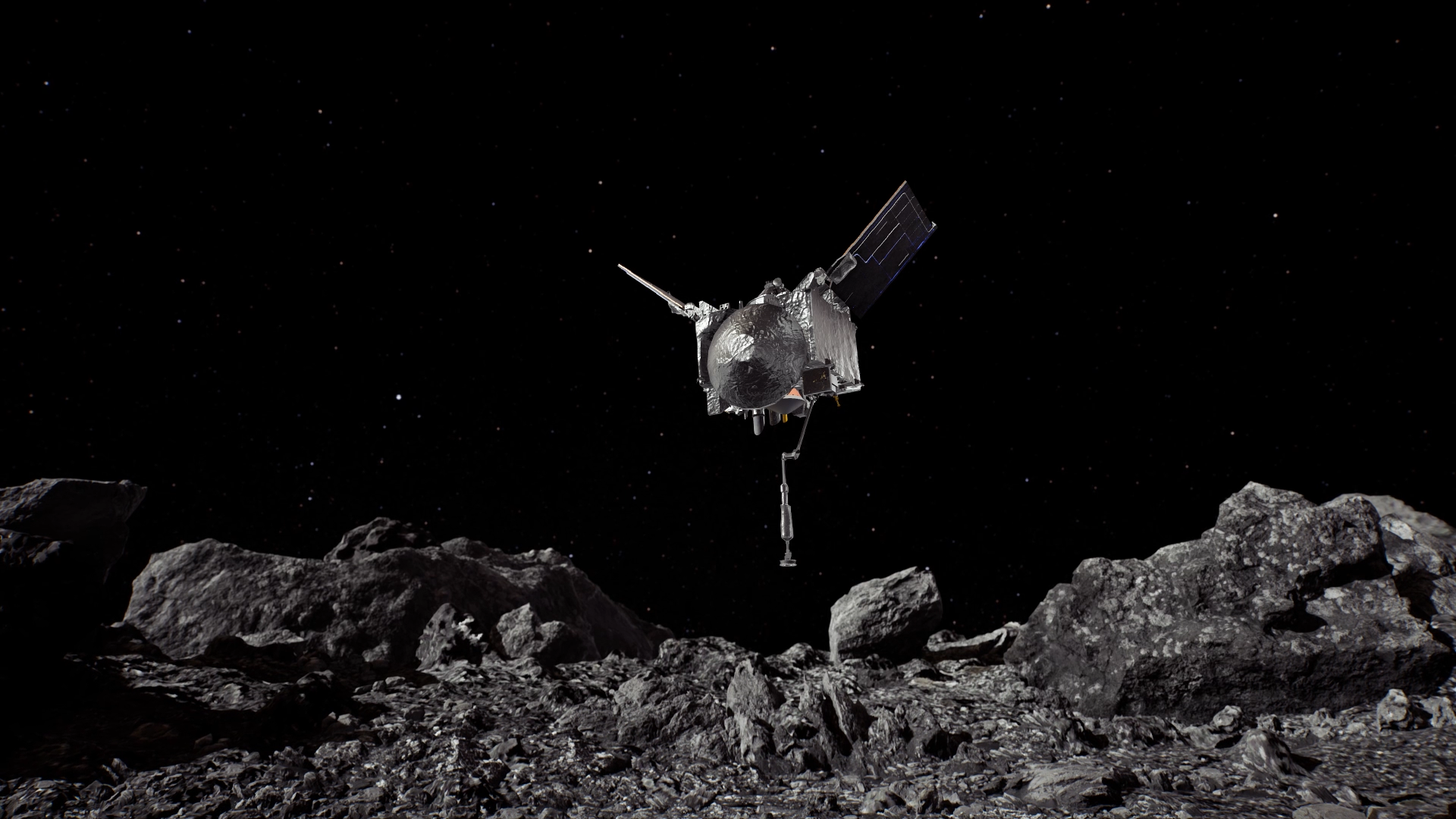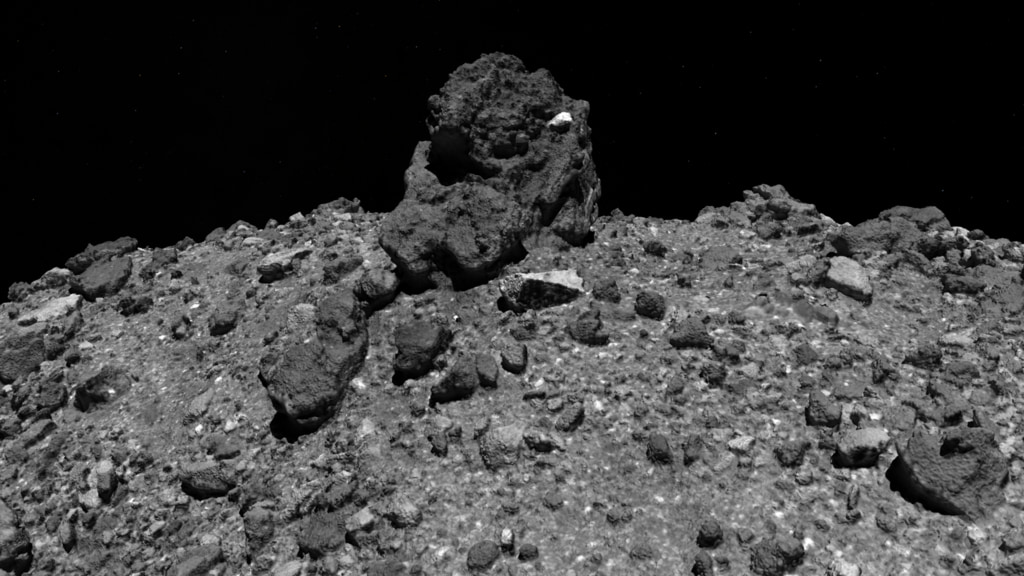Tour of Asteroid Bennu
Take a narrated tour of asteroid Bennu’s remarkable terrain. Complete transcript available.
Universal Production Music: “Timelapse Clouds” by Andy Blythe and Marten Joustra; “The Wilderness” by Benjamin James Parsons; “Maps of Deception” by Idriss-El-Mehdi Bennani, Olivier Louis Perrot, and Philippe Andre Vandenhende
Watch this video on the NASA Goddard YouTube channel.
When NASA’s OSIRIS-REx spacecraft arrived at asteroid Bennu in December 2018, its close-up images confirmed what mission planners had predicted nearly two decades before: Bennu is made of loose material weakly clumped together by gravity, and shaped like a spinning top. This major validation, however, was accompanied by a major surprise. Scientists had expected Bennu’s surface to consist of fine-grained material like a sandy beach, but were instead greeted by a rugged world littered with boulders – the size of cars, the size of houses, the size of football fields. Now, thanks to laser altimetry data and high-resolution imagery from OSIRIS-REx, we can take a tour of Bennu’s remarkable terrain. Unlock the secrets of asteroid Bennu.
Data provided by NASA/University of Arizona/CSA/York University/Open University/MDA.
For More Information
See the following sources:
Credits
Please give credit for this item to:
NASA's Goddard Space Flight Center
Data provided by NASA/University of Arizona/CSA/York University/Open University/MDA.
-
Producer
- Dan Gallagher (KBR Wyle Services, LLC)
-
Visualizer
-
Kel Elkins
(USRA)
-
Kel Elkins
(USRA)
-
Animators
- Jonathan North (USRA)
- Adriana Manrique Gutierrez (USRA)
-
Narrator
- Dan Gallagher (USRA)
-
Public affairs
- Rani Gran (NASA/GSFC)
-
Support
- Erin Morton (The University of Arizona)
- Nancy Neal-Jones (NASA/GSFC)
- William Steigerwald (NASA/GSFC)
- Aaron E. Lepsch (ADNET Systems, Inc.)
Missions
This page is related to the following missions:Series
This page can be found in the following series:Release date
This page was originally published on Thursday, October 8, 2020.
This page was last updated on Sunday, January 19, 2025 at 11:16 PM EST.
